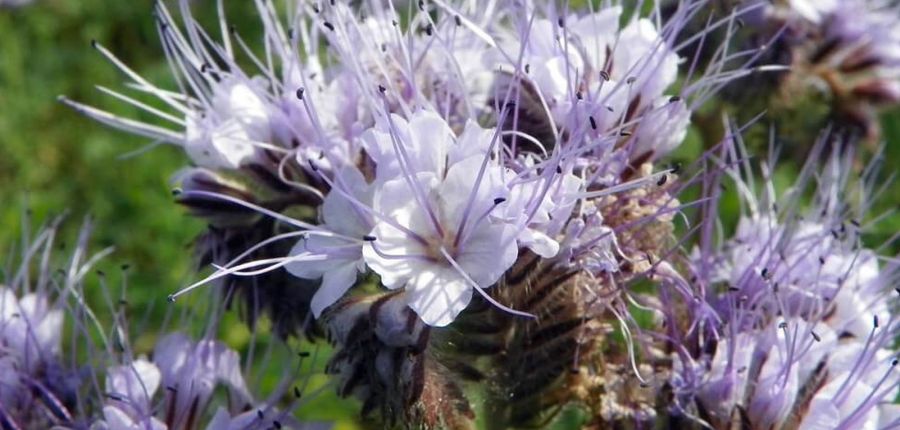Give your soil a treat - Green Manures
Posted By: rocket veg Category: Seasonal AdviceWhat are green manures?
The term ‘green manures’ applies to a group of annual plants which benefit the soil in various ways, similar to the result of digging in animal manure. Green manures have the advantage of being fast-growing – hence their use as ground cover. Broadly speaking, green manures fall into two categories, for sowing either in late spring through the summer months; or sown in autumn for winter use. Broadly speaking, green manures fall into two categories, for sowing either in late spring through the summer months; or sown in autumn for winter use.
Why sow green manures
There are several significant benefits to sowing these clever crops. If left as bare soil, that patch of ground where crops recently grew will soon be covered in voracious weeds which will leach any remaining goodness from the soil. Covering unused spaces with a weed retarding membrane will do the job of suppressing weeds but will add nothing to the soil, so try sowing green manures instead. Given the right conditions, the seed should germinate quickly and the seedlings will soon put on rapid growth, crowding out weeds and providing a wonderful habitat for beetles and other helpful creatures.
Some varieties of green manures belong to the pea and bean family (legumes) and have the additional benefit of collecting nitrogen, a valuable plant nutrient, from the air and storing this (‘fixing’) in their root nodules. Other varieties of green manures help to break down heavy soil and add humus to prevent soil erosion.
Sowing and growing Phacelia
I love to give the bees a late summer treat by sowing Phacelia, one of several crops referred to as ‘green manures’. The delicate purple flowers with a cluster of long, feathery stamens acting as a magnet for all manner of pollinating insects.
First clear the ground of any remains of plants, lightly forked though the soil as you go. Most varieties of green manures have tiny seed which is best broadcast. To make things easy, I tip the entire packet of seed into a shallow plastic pot, ready to take what I need in my hand, then scatter the seed as thinly and evenly as possible over the ground. If sown carefully, a packet of seed goes a long way. I finish off by giving the whole area a gentle raking to settle the seed into the soil. Water well and make sure the soil does not dry out while the seed germinates – which won’t take long at this time of year.
Phacelia is best dug into the ground before it runs to seed or you may struggle to control rogue plants appearing the following season. If you sow later in the year, the plants may survive over winter if the weather is mild and flower early in the year to brighten dull days in spring.
Unless you want the benefits of the flowers – very decorative as well as a real draw for a variety of beneficial predators - cut the plants at ground level before flowering and dig into the ground, turning the roots in as you go. As the remains of the plants rot, they encourage worm activity and rich organic matter will be added to the soil. If you are in a hurry to use the area for new crops in the autumn, make sure that the remains of the Phacelia have rotted before sowing new seed.
Protect your soil
At several points in the year, an allotment or veg patch will have bare soil where crops once grew and which is now being rested. If you are new to the delights of veg growing, you will have quickly realised that weeds are very adept at taking over uncultivated ground and before you know it, what was beautiful soil in pristine condition has become a weed-infested jungle! There are two ways to avoid weeds getting a hold: covering with a suitable material which blocks out light but allows rainwater to filter through; or putting the patch of ground to use again. I am a big fan of the former method during winter months when little will grow and I want to protect the soil structure from the ravages of harsh weather, at the same time encouraging worm activity. During the summer months, I generally sow a variety of green manures on at least one large patch of my allotment, not only to supress weeds and feed the soil, but also to produce a wonderful display of late summer flowers, much loved by bees. The dense foliage also provides the perfect habitat for a range of helpful creatures, such as beetles.
Other green manures to try
Crimson clover is best sown in light soil from March to August and left for two or three months until it begins to flower. If left, all manner of bees will gather to the crimson flowers.
Field, or Winter beans are ideal if you have dense soil which needs breaking up. The beans have the added benefit of being a nitrogen fixer and are best sown from September to November and dug into the ground before they flower.
Winter Mix, a combination of Grazing Rye and Winter Tares, is good for sowing in most types of soil and is another nitrogen fixer.







